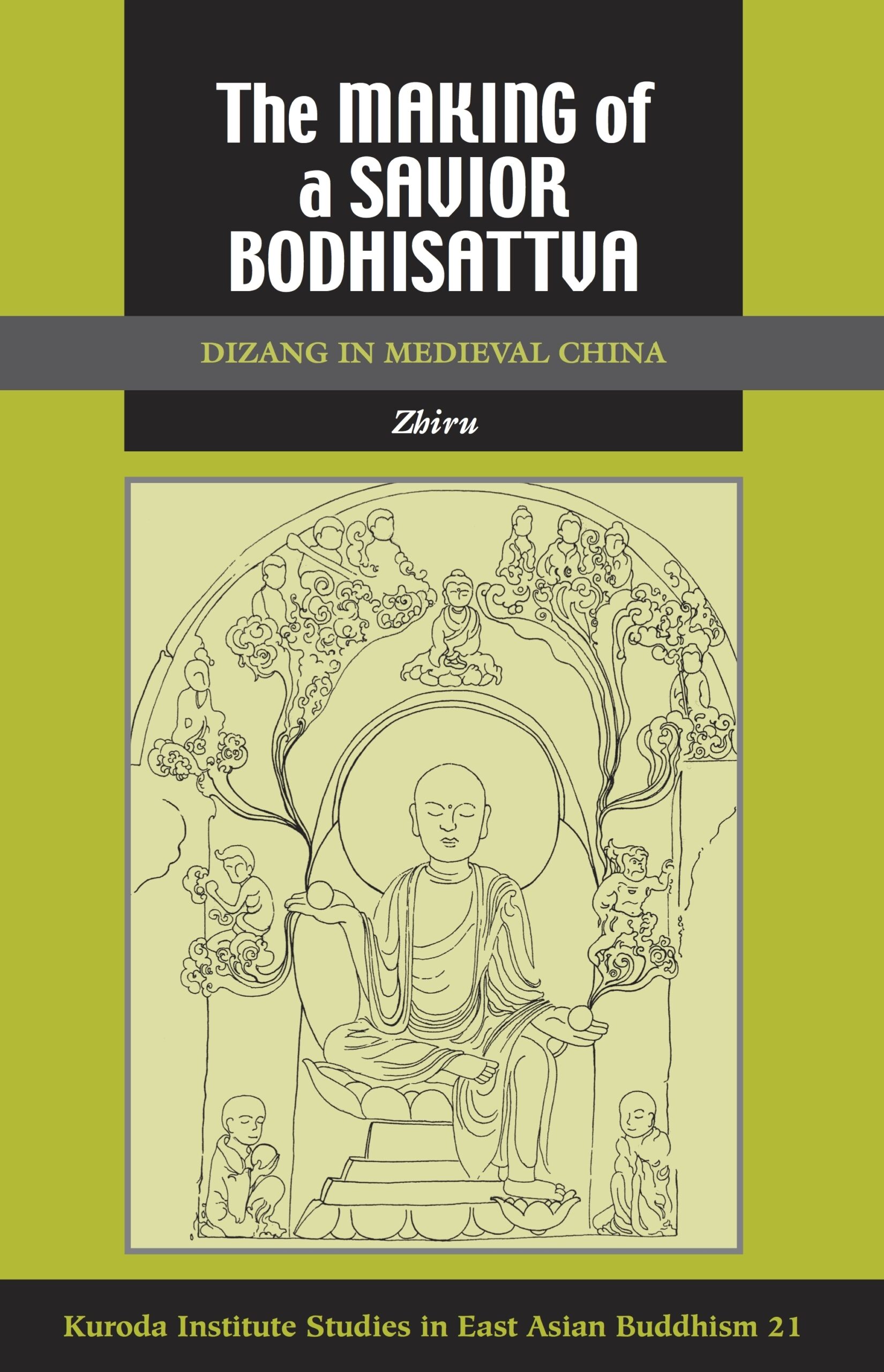The Making of a Savior Bodhisattva: Dizang in Medieval China
- About the Book
-
In modern Chinese Buddhism, Dizang is especially popular as the sovereign of the underworld. Often represented as a monk wearing a royal crown, Dizang helps the deceased faithful navigate the complex underworld bureaucracy, avert the punitive terrors of hell, and arrive at the happy realm of rebirth. The author is concerned with the formative period of this important Buddhist deity, before his underworldly aspect eclipses his connections to other religious expressions and at a time when the art, mythology, practices, and texts of his cult were still replete with possibilities. She begins by problematizing the reigning model of Dizang, one that proposes an evolution of gradual sinicization and increasing vulgarization of a relatively unknown Indian bodhisattva, Ksitigarbha, into a Chinese deity of the underworld. Such a model, the author argues, obscures the many-faceted personality and iconography of Dizang. Rejecting it, she deploys a broad array of materials (art, epigraphy, ritual texts, scripture, and narrative literature) to recomplexify Dizang and restore (as much as possible from the fragmented historical sources) what this figure meant to Chinese Buddhists from the sixth to tenth centuries.
Rather than privilege any one genre of evidence, the author treats both material artifacts and literary works, canonical and noncanonical sources. Adopting an archaeological approach, she excavates motifs from and finds resonances across disparate genres to paint a vibrant, detailed picture of the medieval Dizang cult. Through her analysis, the cult, far from being an isolated phenomenon, is revealed as integrally woven into the entire fabric of Chinese Buddhism, functioning as a kaleidoscopic lens encompassing a multivalent religio-cultural assimilation that resists the usual bifurcation of doctrine and practice or “elite” and “popular” religion.
The Making of a Savior Bodhisattva presents a fascinating wealth of material on the personality, iconography, and lore associated with the medieval Dizang. It elucidates the complex cultural, religious, and social forces shaping the florescence of this savior cult in Tang China while simultaneously addressing several broader theoretical issues that have preoccupied the field. Zhiru not only questions the use of sinicization as a lens through which to view Chinese Buddhist history, she also brings both canonical and noncanonical literature into dialogue with a body of archaeological remains that has been ignored in the study of East Asian Buddhism.
- About the Author(s)
-
Zhiru, Author
Zhiru, a Buddhist Nun ordained in the Chinese tradition, received her M.A. from the University of Michigan and holds a doctorate in East Asian Buddhism from the University of Arizona. She has authored a number of articles on medieval Chinese Buddhist cults and contemporary Buddhism in Taiwan. She is currently professor in the Department of Religious Studies at Pomona College.
- Reviews and Endorsements
-
- Overall, The Making of a Savior Bodhisattva is an excellent work that contributes significantly to the fields of Buddhist studies and Chinese religion. It will be the standard work on the early history of Dizang. Its comprehensive contextualization of the Dizang cult results from a judicious use of a wealth of sources and astute reflections on the best of contemporary scholarship. Thoroughly researched and rich in details, the book has much to offer students and specialists in related disciplines.
—China Review International - This book stands out for the wealth of the material (both canonical and non-canonical, textual and epigraphical, Buddhist and non-Buddhist), and for the delicate balance that is adroitly maintained between different disciplines. It is particularly commendable for its methodological inventiveness. . . . This book is well written and edited, and the arguments are carefully advanced and well founded.
—Journal of Asian Studies - Zhiru’s account of Dizang is thorough, and will surely become the standard work on the early history of this important bodhisattva. . . . for those who are interested in the development of Chinese Buddhism and bodhisattva cults, The Making of a Savior Bodhisattva is an important addition to our understanding and should be read.
—Studies in Religion - The Making of a Savior Bodhisattva is a splendid book for advanced undergraduates and for graduate students and scholars in the fields of Buddhism and Chinese religion.
—Journal of Chinese Religions - Her fascinating exploration of the cult of Dizang in Medieval China shows how widely Buddhism reached into Chinese culture as it successfully put down roots in the society.
—Buddhadharma - “An excellent work that contributes significantly to the fields of Buddhist studies and Chinese religion. It will be the standard work on the early history of Dizang. Its comprehensive contextualization of the Dizang cult results from a judicious use of a wealth of sources and astute reflections on the best of contemporary scholarship. Thoroughly researched and rich in details, the book has much to offer students and specialists in related disciplines.” —China Review International (16:4, 2009)
—China Review International (16:4, 2009) - "A splendid book for advanced undergraduates and for graduate students and scholars in the fields of Buddhism and Chinese religion." —Journal of Chinese Religions (36, 2008)
—Journal of Chinese Religions (36, 2008)
- Overall, The Making of a Savior Bodhisattva is an excellent work that contributes significantly to the fields of Buddhist studies and Chinese religion. It will be the standard work on the early history of Dizang. Its comprehensive contextualization of the Dizang cult results from a judicious use of a wealth of sources and astute reflections on the best of contemporary scholarship. Thoroughly researched and rich in details, the book has much to offer students and specialists in related disciplines.
- Supporting Resources
-





